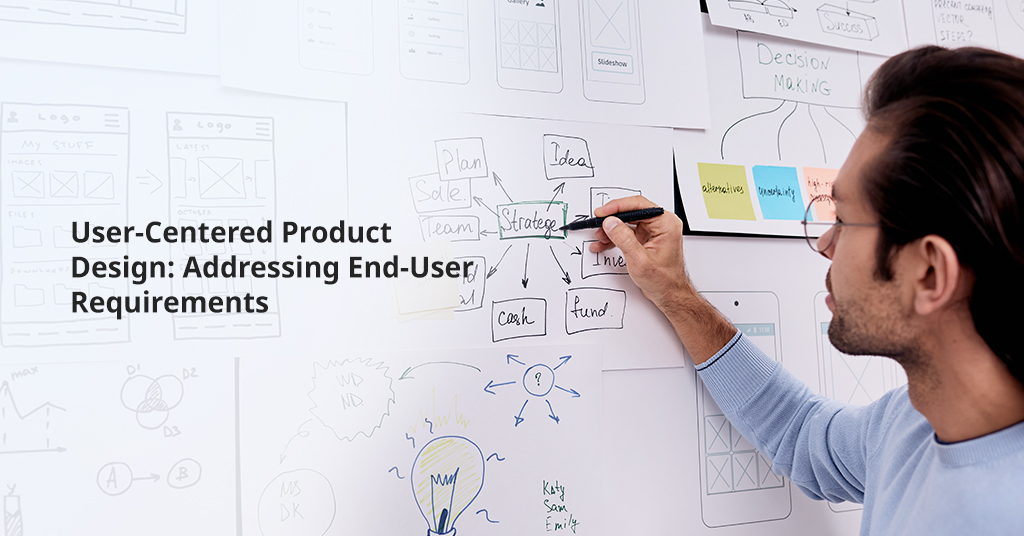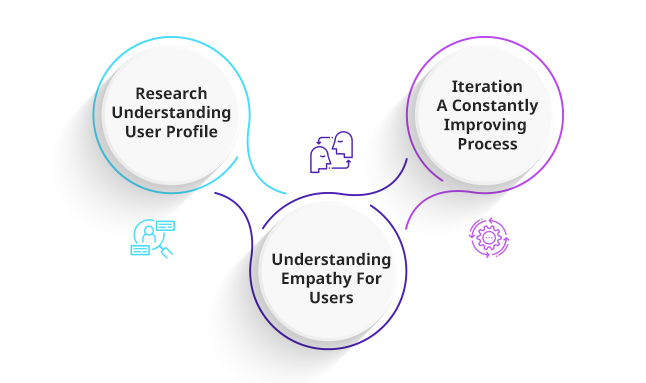User-centered product design prioritizes the needs, preferences, and experiences of end-users, when creating a product or service. User-centered design processes involve thorough research to understand user behavior, preferences, and pain points. It helps design user-friendly products that enhance customer satisfaction, elevates the user experience, and drives business success.
The Importance of Understanding and Meeting User Needs
Imagine product design so compelling, it results in customers commending the product design to others, vocally. Furthermore, their loyalty and recommendations about your product convey its effectiveness to other potential users. Now imagine consistently beating the competition because you’re constantly innovating based on what your users truly want.
In this blog post, we’ll dive into how putting your users first can help you understand the secrets to customer satisfaction, growth, and industry domination.
User-centered design focuses on three core elements: research-driven understanding of user needs, crafting intuitive interfaces, and ongoing feedback loops. By prioritizing user experience and satisfaction, this approach not only meets customer needs but anticipates them, creating products that resonate and delight.
User-Centered Design Principles
Several core principles of user-centered design are applicable to product development processes:
1. Early User Involvement: Engage users from project initiation to ensure all design decisions prioritize their needs.
2. Business-User Alignment: Ensure all project stakeholders comprehend both user requirements and business objectives.
3. Continuous Feedback Integration: Integrate user feedback throughout the product life cycle to inform decision-making.
4. Iterative Design Approach: Continuously enhance user experience as design teams gain deeper insights into user behavior.
The Design Thinking Process
Integrating user-centered design principles in the design thinking process is essential for businesses prioritizing their target audiences. The user-centered design process t involves the following stages:
1. Grasping user needs, motivations, and pain points via research, interviews, and related methodologies.
2. Collaborating and brainstorming with diverse user groups and industry experts to identify potential solutions to user challenges and problems.
3. Creating prototypes for usability and accessibility testing. Prototyping also assesses the potential solution’s iterative capability.
4. Testing and gathering feedback to understand user experience to refine and align the product with user expectations.
5. Testing for iterative ability or consistency.
Design thinking processes need to be iterative to help businesses align the final product with user needs and expectations.
The Efficient Implementation of User-Centric Design
Some of the ways involved in efficient implementation of user-centered design processes include:
1. User Feedback: Creating a feedback mechanism—for example, user surveys, tests, and customer support channels—to gather direct insights can help businesses understand expectations better and address concerns promptly.
2. Multidisciplinary Team: Assembling cross-functional teams can help collaborative efforts. These can also help integrate user-centered design principles from the early stages of product development.
3. Mapping User Experience: Creating detailed user journey maps can help businesses visualize the user experience more accurately and comprehensively. It can help identify challenges, pain points, and areas for improvement.

For Companies:
1. Improved Product Quality: Iterative development and continual user feedback enable ongoing enhancement of product quality.
2. Enhanced Productivity: Setting clear goals and streamlining processes boost organizational efficiency and productivity.
3. Heightened Brand Perception: Prioritizing user-centric design enhances brand value and customer perception.
4. Revenue Growth: Enhanced products bolster brand reputation, often resulting in increased sales and revenue.
5. Cost Reduction: User-centered design optimizes resource allocation, reducing development, maintenance, and redesign costs, maximizing ROI.
For Users:
6. Enhanced Customer Experience: User-centered design-driven products are tailored to address user needs, thereby improving user satisfaction through better engagement and increased productivity.
7. Increased Accessibility: Emphasizing diverse user perspectives leads to more accessible interfaces, ensuring inclusivity in product design.
For Designers:
8. Business Alignment: Mastery in user-centered design can help enhanced understanding of user needs, reducing redesign efforts and costs through early identification and resolution of usability issues.
9. Meaningful Impact: By prioritizing user needs, designers can directly impact the quality of life for numerous individuals through product development.
10. Strategic Involvement: Integrating user-centered design into business strategy fosters direct engagement with stakeholders and executives, aligning design efforts with organizational goals.
Making the Correct Choice to Drive Efficiencies
- A key rule of user-centered design is that it should help businesses gain a deeper understanding of their specific audience segment’s goals, motivations, and expectations, and thus, channelize efforts better.
- Data-driven insights help focus on audience or user expectations better. They can help refine products or services as well as ensure iterative designs.
- User-centered design offers the advantage of addressing inclusivity and accessibility for all users, including those with various disabilities. This approach enables the consideration and resolution of these diverse needs within the design process.
A user-centric product design prioritizes understanding and meeting customer needs. Embrace the design thinking process, lean methodologies, and continuous improvement for efficient and successful product development. Leverage customized IT expertise to unblock business profitability.

